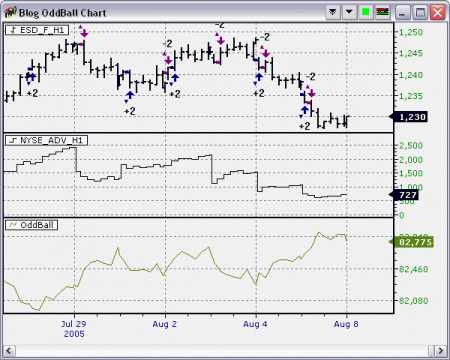Market Breadth Primer: Custom Market Breadth Components Resources
 In order to construct and maintain custom market breadth data, you need access to the latest list of components for the target baskets in order to collect the statistics properly. Following are resources you may find useful if you maintain your own custom market breadth data like I do. It is also useful for anyone tracking these indices in someway.
In order to construct and maintain custom market breadth data, you need access to the latest list of components for the target baskets in order to collect the statistics properly. Following are resources you may find useful if you maintain your own custom market breadth data like I do. It is also useful for anyone tracking these indices in someway.
General Guidelines
The creators of the indices usually do a bad job in providing the most updated symbol lists online. Obviously they are not in the business of dealing with retail clients thus they do not need to maintain their web presence like the financial firms down the chain.
The ETF custodians are usually the best ones in providing the latest holding lists to the ETFs because they are required to do so by regulations. As these ETFs are close proxy of the indices they track, the holding lists are very likely to hold the same components as in the corresponding cash indices. Since these custodian firms have to work with retail investors, they do a much better job in providing updated holding information.
Online free resources are not consistent in terms of data correctness. Wikipedia pages are pretty good but the update frequency heavily depends on the volunteers.
Paid Solution
If you do not mind paying a small monthly fee, there is TC2000 from Worden Brothers. To those people who still remember them by their old DOS version of Telechart – yep, Telechart is still kicking and their current charting platform is pretty slick for stock trading. Since TC2000 maintains lists of sector components, index components, etc. and it has an export feature allowing the users to export the data and symbols easily into text files, it can be used as the quickest solution to maintain these symbol lists. It is a huge time saver if you track many symbol lists like me with some of them having thousands of symbols. e.g. Russell 2000
My Symbol Lists
Since I keep track of all these symbol baskets myself, I will make them available at the forum download area under the thread US Stock Market Index Component Lists
S&P 500 Index
1. The company maintaining the best S&P 500 list is State Street because it is the custodian of SPY ETF. It has a website made specifically for the SPDR series of ETFs with the holdings available in Excel format.
https://www.spdrs.com/product/fund.seam?ticker=spy
2. The open source list of S&P 500 components is available from Wikipedia. The good thing about this site is that it has a section on recent changes to the symbols making it easier to track and update your own symbol list.
http://en.wikipedia.org/wiki/List_of_S%26P_500_companies
3. CBOE maintains an online version of S&P 500 symbols but the list is outdated almost all the time.
http://www.cboe.com/products/snp500.aspx
4. McGraw Hill Financial, the keeper of the S&P 500 Index, has the list available online too. As you may guess, it is totally useless because they only update the excel file every few months.
http://ca.spindices.com/indices/equity/sp-500
Nasdaq 100 Index
1. The best NDX list of course would be coming from Invesco PowerShares, the firm responsible for the PowerShares ETFs. The QQQ ETF specification page has a link to the complete holding list online and also has a downloadable version in CSV format.
http://www.invescopowershares.com/products/overview.aspx?ticker=QQQ
2. The open source list from Wikipedia. Unlike the one maintained for S&P 500, this one does not provide the list in table format with the corresponding symbol for each company thus making it less useful for symbol list maintenance.
http://en.wikipedia.org/wiki/NASDAQ-100
3. CBOE’s online list for Nasdaq 100 is outdated almost all the time too.
http://www.cboe.com/products/indexopts/ndx_spec.aspx
4. Nasdaq does pretty good job here with the latest symbols with quotes. It is pretty easy to copy the web page table into something like Excel and then strip out the symbols manually.
http://www.nasdaq.com/quotes/nasdaq-100-stocks.aspx
Dow Jones Industrial Average
Dow 30 is so short as a list that it is not much work in maintaining the symbol list.
1. The best list comes from DIA ETF custodian State Street.
https://www.spdrs.com/product/fund.seam?ticker=dia
2. Wikipedia also has a good table based list for Dow with change histories.
http://en.wikipedia.org/wiki/Dow_Jones_Industrial_Average
Russell 2000 Index
1. BlackRock is the iShares series ETFs custodian. To access more data, you have to register. IWB ETF specification provides access to the component list in table format.
http://us.ishares.com/product_info/fund/overview/IWB.htm?fundSearch=true&qt=IWB
2. Russell Investments provides an online list of the components in a PDF file. It is also always outdated. I know, it must be a joke, right?
http://www.russell.com/Indexes/data/fact_sheets/us/Russell_2000_Index.asp
3. Wikipedia does not even have the complete list there. Well, maintaining 2000 symbols may not be a full time job, it is very close.












